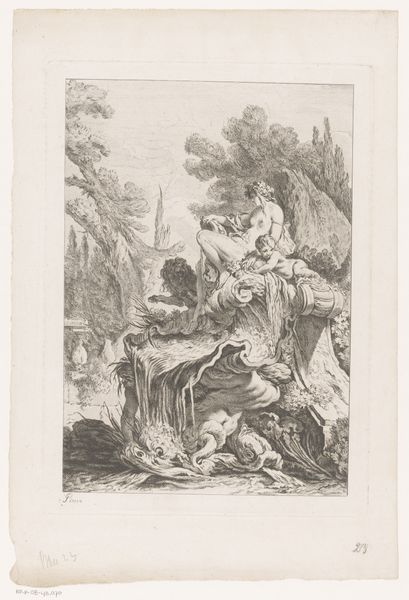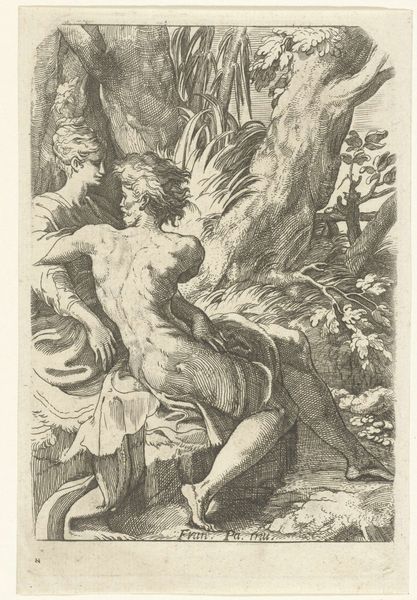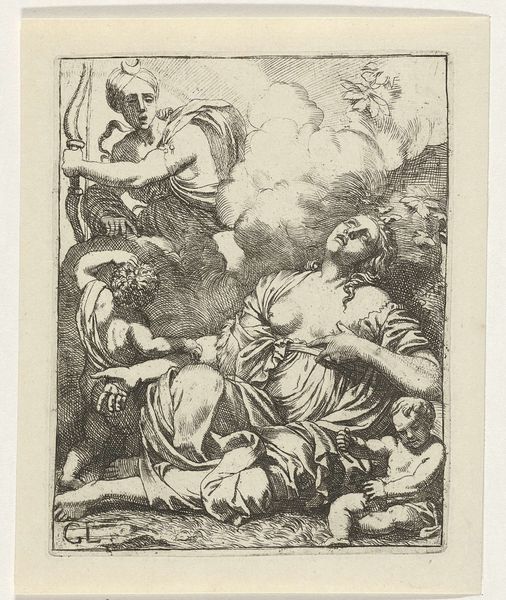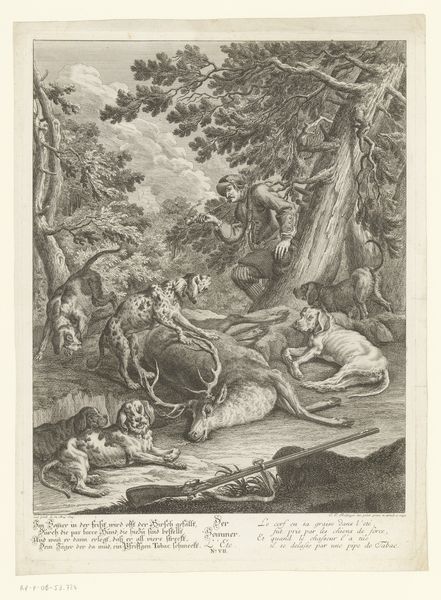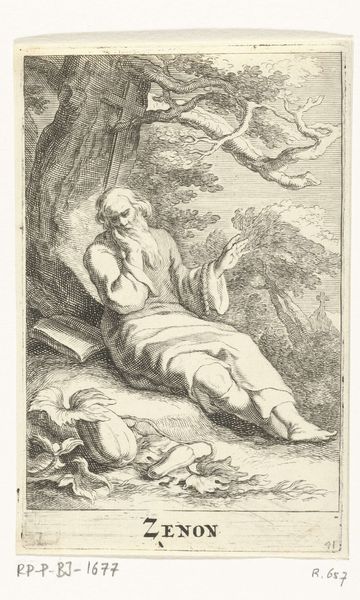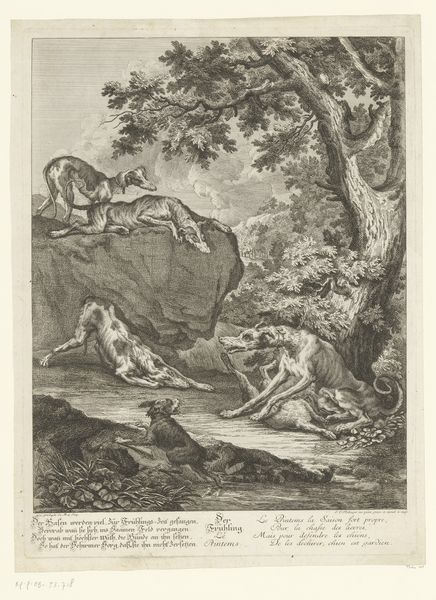
drawing, etching, ink
#
drawing
#
narrative-art
#
baroque
#
pen illustration
#
pen sketch
#
etching
#
pencil sketch
#
landscape
#
figuration
#
personal sketchbook
#
ink
#
ink drawing experimentation
#
pen-ink sketch
#
pen work
#
sketchbook drawing
#
genre-painting
#
storyboard and sketchbook work
#
sketchbook art
Dimensions: height 137 mm, width 102 mm
Copyright: Rijks Museum: Open Domain
Editor: We’re looking at "The Prodigal Son as Swineherd" by Theodoor van Thulden, created sometime between 1616 and 1669, an etching showing the biblical figure in a state of utter despair, surrounded by pigs. What do you make of this work? Curator: It’s a fascinating example of how artists used biblical narratives to reflect on the socio-political climate of their time. This image of the Prodigal Son isn't just a religious scene; it’s a commentary on poverty, social mobility, and perhaps even the Dutch Golden Age’s own anxieties about wealth and excess. What strikes you about the setting? Editor: The contrast. We have this incredibly detailed tree looming over the desolate figure. And the pigs... They're almost caricatures. Curator: Exactly! The artist is using those visual cues to heighten the emotional impact. The lush landscape, despite its starkness, is a reminder of what the Prodigal Son has lost, and those exaggerated features of the pigs underscore his degradation. How do you think audiences of the 17th century would've perceived this work versus today's viewers? Editor: Maybe they saw a clearer reflection of themselves? I mean, considering the social upheavals of the era, and the growing divide between rich and poor... this scene would hit hard. Now, it feels more like a cautionary tale, but less viscerally, maybe? Curator: A perceptive point. Art like this played a vital public role then, sparking dialogues about ethics, wealth, and societal responsibility in ways we might not fully appreciate today. Its continued power lies in prompting reflections about our own societal structures and our places within them. Editor: That's insightful. I see how art acts like a mirror, reflecting not just the past but our present too. Curator: Precisely, and that's where the history of art becomes vitally important and always current.
Comments
No comments
Be the first to comment and join the conversation on the ultimate creative platform.

